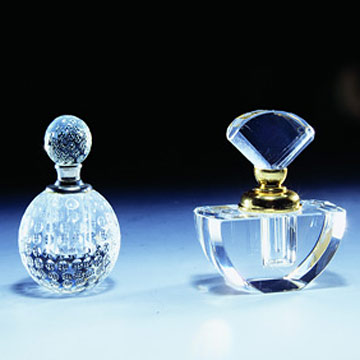 it wasn't until the 1960's that the quest to find pheromone in mammals became a really significant. In 1972 in scientific magazine Alex Comfort author of the 1970's best seller The joy of Sex argued that in nature that pheromones were likely to exist in humans. Since then a plethora of studies has implicated pheromones in many mammalian activities, including sex, maternal behavior, fighting, nesting and the recognition of members of one's species. Pheromones have been said to accelerate the onset of puberty, block pregnancies and influence oestrous cycles and hormonal surges in a range of animals, although no one has ever identified the agents involved. In humans, pheromones have been claimed to influence sexual behavior, mood, length of menstrual cycles, even which seat people choose in waiting rooms. By 2000, dozens of brands of perfumes and aftershaves contained supposed pheromones, contributing to a multibillion dollar industry. Even so, in 2005, the question of wether humans have pheromones was listed by science among the top 100 unanswered scientific questions.
it wasn't until the 1960's that the quest to find pheromone in mammals became a really significant. In 1972 in scientific magazine Alex Comfort author of the 1970's best seller The joy of Sex argued that in nature that pheromones were likely to exist in humans. Since then a plethora of studies has implicated pheromones in many mammalian activities, including sex, maternal behavior, fighting, nesting and the recognition of members of one's species. Pheromones have been said to accelerate the onset of puberty, block pregnancies and influence oestrous cycles and hormonal surges in a range of animals, although no one has ever identified the agents involved. In humans, pheromones have been claimed to influence sexual behavior, mood, length of menstrual cycles, even which seat people choose in waiting rooms. By 2000, dozens of brands of perfumes and aftershaves contained supposed pheromones, contributing to a multibillion dollar industry. Even so, in 2005, the question of wether humans have pheromones was listed by science among the top 100 unanswered scientific questions.Recent scientific research has shown that men prefer T-shirts worn by ovulating women to those worn by women in another part of their cycle. A woman will unknowingly rate male body odor as more pleasant if the source of the odor shares fewer of her immune-system genes (which means he's less likely to be close kin). People exposed to cotton underarm pads worn by moviegoers can tell whether a viewer was scared or amused.
In addition, both males and females are affected by pheromones and the olfactory secretions of their children and their mates ... Like insects and other animals, scent promotes individual and gender recognition, can determine caste assignment and social and economic status, as well as kinship, group, and maternal identity. For example, a breast-fed human infant is able to distinguish by smell, the breast of his mother vs that of another lactating female ... Conversely, even with as little as 10 minutes of exposure to their newborn, mothers are able to identify the smell of their baby vs that of another infant ... In fact, even fathers, as well as aunts and grandmothers are able to identify, by smell, a garment worn by genetically related vs unrelated infants including garments worn by the biological mother
 Releaser pheromones trigger a behavioral response (such as wooing a mate), while so-called primer pheromones cause physiological changes.
Scientists have observed what they think are the effects of human primer pheromones, including studies showing that some compound in the extract from a woman's armpit can cause menstrual cycles of nearby women to sync up. And a recent study found that women can smell a guy's sexual intentions.
Nursing infants have been found to turn toward a lactating mother's breast, suggesting some scent molecules drive the response.
But without any actual chemicals identified as pheromones, scientists can't test effects on humans, so the jury is out as to whether we communicate via pheromones.
Releaser pheromones trigger a behavioral response (such as wooing a mate), while so-called primer pheromones cause physiological changes.
Scientists have observed what they think are the effects of human primer pheromones, including studies showing that some compound in the extract from a woman's armpit can cause menstrual cycles of nearby women to sync up. And a recent study found that women can smell a guy's sexual intentions.
Nursing infants have been found to turn toward a lactating mother's breast, suggesting some scent molecules drive the response.
But without any actual chemicals identified as pheromones, scientists can't test effects on humans, so the jury is out as to whether we communicate via pheromones.
Tristram Wyatt of the University of Oxford explains that "As far as releasers, it may be that we simply don't have them," Wyatt said. "Certainly courtship and everything else is so complex in humans that it may be that the things that are really important are visual and social signals." Recent research showed that at about the same time our primate ancestors gained color vision, they also lost the genes for so-called vomeronasal organ (VNO) receptors, Wyatt said. Non-human animals use the organ to detect pheromones. (Turns out, mice use both their VNO and main smelling system to detect pheromones, so maybe humans don't need that specialized organ.) "It may be at that point that we moved from running things mostly by pheromones to doing things much more in the visual fashion," Wyatt said. In the end, it is best to avoid expensive bottles and potions that claim to enhance sex appeal. The likely explanation is that your own body sweat would probably work much better and with family members as a nurturing response, so romance is off the table.



No comments:
Post a Comment